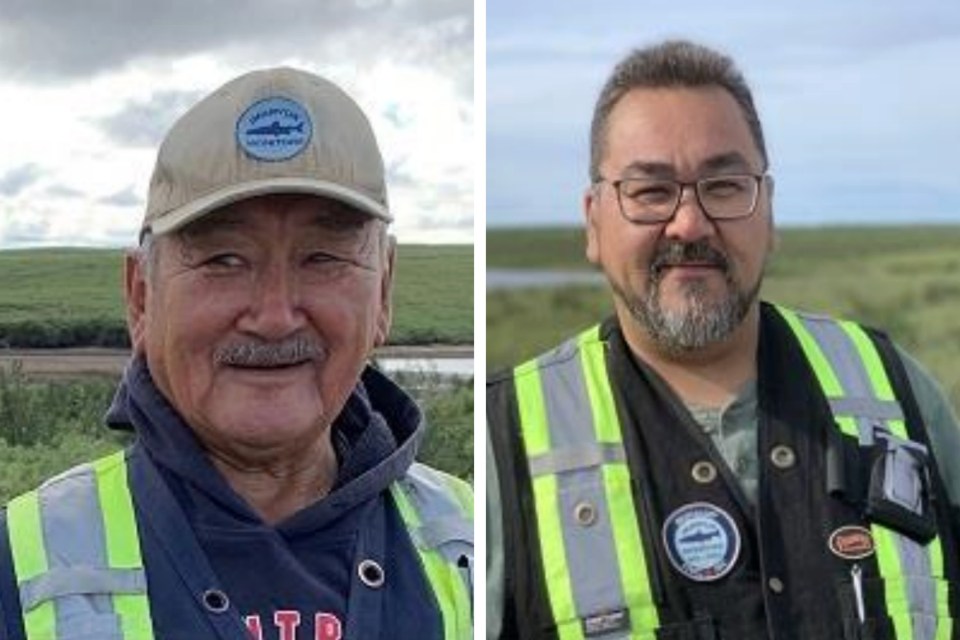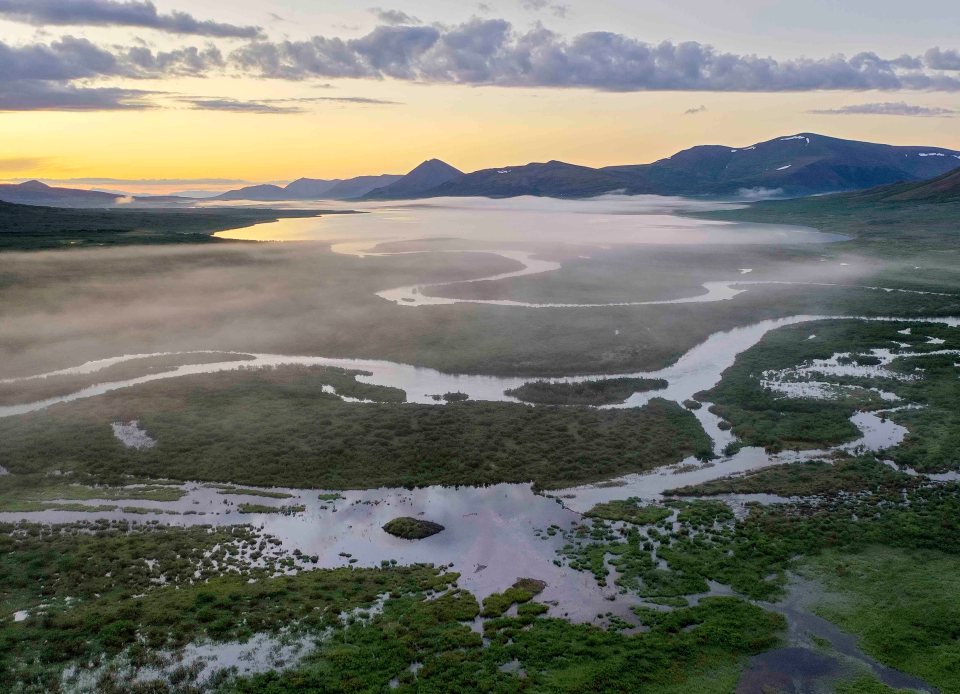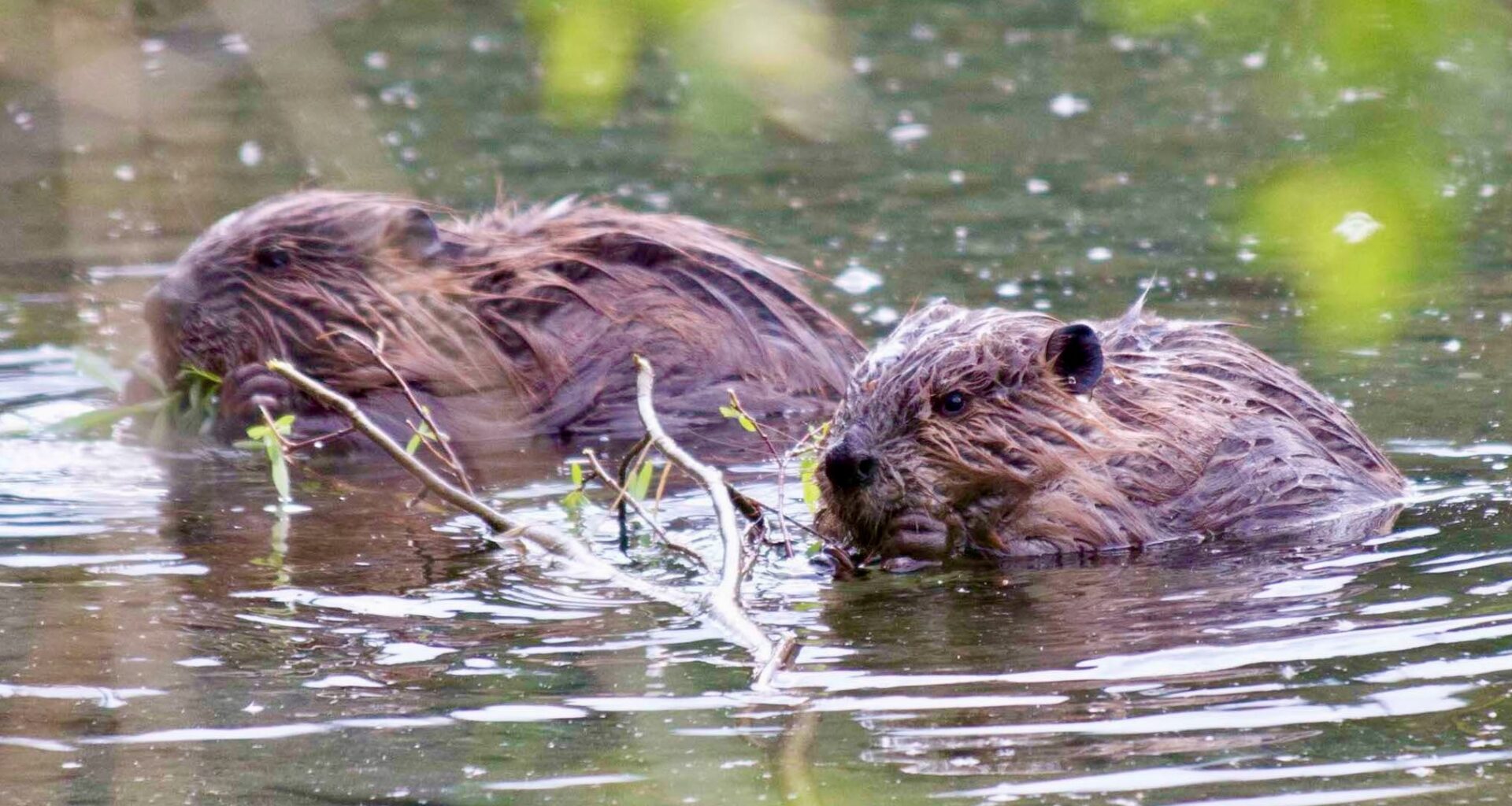A preview of The Nature of Things episode Beavers From Above.
Back in 2022, when the world was a simpler place, one of Cabin Radio’s most-read articles all year was titled: “Experts sound alarm as thousands of beavers migrate north.”
You can read it here. Caitrin Pilkington documented how experts were gathering to discuss “the proliferation of big and small beaver dams from Nunavik to Inuvik” – and the significant implications for Arctic ecosystems as beavers moved in.
Now, CBC documentary series The Nature of Things is examining the phenomenon, which has not gone away. If anything, it’s having more of an impact than ever.
A 60-minute episode airing at 8pm on Wednesday (and also available on CBC Gem), titled Beavers From Above, heads to the Inuvialuit Settlement Region to explore how beavers are moving northward and the changes they’re making.
“It’s a real issue for our people because we on the coast, and probably those people along the river, are so dependent on fish. Beavers started becoming a problem to us because they were damming up the fish-bearing creeks,” Tuktoyaktuk hunter and trapper Lennie Emaghok told Cabin Radio.
 Lennie Emaghok, left, and Kevin Arey in photos supplied by The Nature of Things’ documentary team.
Lennie Emaghok, left, and Kevin Arey in photos supplied by The Nature of Things’ documentary team.
Emaghok and Kevin Arey, who each hunt and trap in the Inuvialuit Settlement Region and are part of monitoring programs there, were featured in the filming of Beavers From Above.
“We travel a lot on our land and we see all the changes, we live the changes. It’s so visible to us now,” said Arey.
“Due to a lot of our scientific help, too, we have a better understanding of what’s happening, and maybe what’s going to happen sooner or later.”
‘We can see new ponds forming’
So what is actually happening?
Ken D Tape is a professor of ecology at the University of Alaska Fairbanks who studies climate change in the Arctic.
For the past 10 years, a lot of his research has focused on beavers moving into the Arctic tundra.
As he and his colleagues examined the effects of climate change on vegetation, snow and permafrost, they started noticing that moose were moving farther into the Arctic as the vegetation became more lush. The next thing they spotted? Beavers.
“The reason we were able to see that, much more clearly than for other wildlife, is that beavers build ponds using dams. They construct these ponds that you can see from space and satellite imagery,” said Tape. (Hence the documentary’s name, Beavers From Above.)
 An Arctic landscape affected by beavers. Photo: Ken D Tape
An Arctic landscape affected by beavers. Photo: Ken D Tape
“We’re able to see these new ponds forming in the Arctic tundra where there weren’t ponds before,” Tape explained.
“That’s really what got us going on this question of beavers moving into the Arctic, and what the implications are for the ecosystems, the future Arctic landscape and its people.”
Sarika Cullis-Suzuki is the host of the documentary, which was produced by Toronto’s Markham Street Films.
“The big thing is just the rate of change and how quickly these beavers have gone into these Arctic ecosystems,” Cullis-Suzuki said.
“It’s not common to see beavers in the Arctic, but now it’s something that seems to be happening at such a rapid speed.”
The scientists she spoke with are still figuring out the long-term consequences of beavers moving across the North, she said, describing how Inuvialuit land monitors would take apart dams only for “perfect replicas” to have been rebuilt by the beavers the following day.
“You see how quickly these beavers can work and just how strong they are. That was really remarkable,” she said.
“The question is, what does this mean for the future? Because it appears that these animals are here to stay.”
No turning back?
Tape echoes Emaghok’s concern about the effect of dams on fish, and adds that people have also expressed a fear of Giardia – the parasite spread by beavers that can contaminate water.
“You know, are they still going to be able to drink the water? And I’m not sure I have an answer,” he said.
“When beavers move into an area, the changes they invoke or impart on the landscape effectively accelerate the effects of climate change.
“People can expect more changes along waterways. They might not be able to get their boat everywhere that they could before. Some things with fish may change. Some might be positive, some might be negative, but certainly the concern is that there’s going to be a lot of negative impacts for fish.”
 Beavers are having a “drastic” impact on northern landscapes. Photo: Ken D Tape
Beavers are having a “drastic” impact on northern landscapes. Photo: Ken D Tape
Tape said it’s difficult to overstate the drastic nature of the shift beavers are bringing to the North.
“Before we started studying beavers, we were studying climate change in the Arctic. In some places, that’s dramatic. In other places, it’s fairly incremental,” he said.
“But when a beaver shows up, it’s just night and day. It’s like hitting the system over the head with a hammer.
“Things change rapidly, they continue to change as long as the beavers are there, and right now it doesn’t look like they’re going to be turning back any time soon.”
From 2023: New study looks at how beaver migration is impacting Inuit
Arey said he is grateful the documentary will help to demonstrate the scale of the issue in the Inuvialuit Settlement Region.
“Maybe in the near future, we can find a solution – something we could do to help our land,” he said.
“Where we live, it’s a big, vast area. Lots of water, lots of rivers, lots of creeks. We’d better try to take care of it and keep what we have left for the future generations.”
Related Articles









